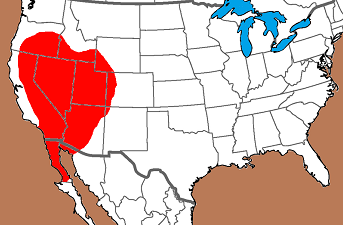Outline is Representative of Size and Shape:

Name Details:
Identified By: Martin A. Baumhoff and J.S. Byrne
Named For: Sierra Nevada Mountains
Date Identified: 1959
Type Site:
Identified By: Martin A. Baumhoff and J.S. Byrne
Named For: Sierra Nevada Mountains
Date Identified: 1959
Type Site:
Point Validity:
Valid type
Baumhoff was a distinguished anthropologist and serves as the Chair in the Department of Anthropology, University of California – Berkley. He conducted extensive studies into the archaeology of California. Baumhoff conducted studies into the Desert Series with Bryne. This type was named in a professional publication and has many professional references. This is considered a valid type.
Baumhoff was a distinguished anthropologist and serves as the Chair in the Department of Anthropology, University of California – Berkley. He conducted extensive studies into the archaeology of California. Baumhoff conducted studies into the Desert Series with Bryne. This type was named in a professional publication and has many professional references. This is considered a valid type.
Desert Sierra Side Notch
AKA: Sierra Side NotchCluster: Desert Side Notch Cluster
Description of Physical Characteristics and Flaking Pattern:
This is a thin small isosceles or equilateral triangular side notch point with a flattened cross section. The blade is primarily straight, but may vary to slightly excurvate. Many examples are finely serrated. Parallel notches are well below the mid-point and are narrow and deep commonly forming a narrow neck. The shoulders are horizontal with an expanded stem. The basal edges are commonly squared with a straight to slightly concave base with a center basal notch. This point is manufactured using percussion flakes shaped and finished with pressure flaking forming a random flaking pattern.
Size Measurements:
Total Length - 9 to 40 mm (average 17 to 26 mm), Stem Length - 6 to 9 mm, Blade Width - 5 to 15 mm (average 8 to 12 mm), Neck Width - 5 to 10 mm (average 7 mm), Basal Width - 10 to 19 mm, Thickness - 2 to 4 mm.
Total Length - 9 to 40 mm (average 17 to 26 mm), Stem Length - 6 to 9 mm, Blade Width - 5 to 15 mm (average 8 to 12 mm), Neck Width - 5 to 10 mm (average 7 mm), Basal Width - 10 to 19 mm, Thickness - 2 to 4 mm.
Commonly Utilized Material:
Agates, cherts, obsidian, basalt, and rarely glass
Agates, cherts, obsidian, basalt, and rarely glass
Additional Comments:
This point has a decreased occurrence in Fremont cultural regions. Points from this cluster replaced points from Rosegate Cluster. (Justice, 2002).
Martin A. Baumhoff and J.S. Byrne (1959) describes four subtypes to this point; Delta, General (Desert Classic), Redding, Sierra.
This point has a decreased occurrence in Fremont cultural regions. Points from this cluster replaced points from Rosegate Cluster. (Justice, 2002).
Martin A. Baumhoff and J.S. Byrne (1959) describes four subtypes to this point; Delta, General (Desert Classic), Redding, Sierra.
Distribution:

Distribution Comments:
This point is primarily found in the Great Basin, the Colorado Plateau, into the Sierra Nevada's in California, up into the Snake River Plain and into Oregon.
This point is primarily found in the Great Basin, the Colorado Plateau, into the Sierra Nevada's in California, up into the Snake River Plain and into Oregon.
Age / Periods:
Date: 800 - 200 B.P.
Cultural Period: Late Prehistoric to Historic
Glacial Period: Medieval Warm to Little Ice Age
Culture: Apache, Hopi. Gosiut, Moki, Northern Paiute, Shoshone, Uroc, and many other cultures
Date: 800 - 200 B.P.
Cultural Period: Late Prehistoric to Historic
Glacial Period: Medieval Warm to Little Ice Age
Culture: Apache, Hopi. Gosiut, Moki, Northern Paiute, Shoshone, Uroc, and many other cultures
Age Details:
Other points in this cluster / Related / Associated Points:
Bear River, Desert, Desert Delta, Desert Redding, Panoche
Bear River, Desert, Desert Delta, Desert Redding, Panoche




















